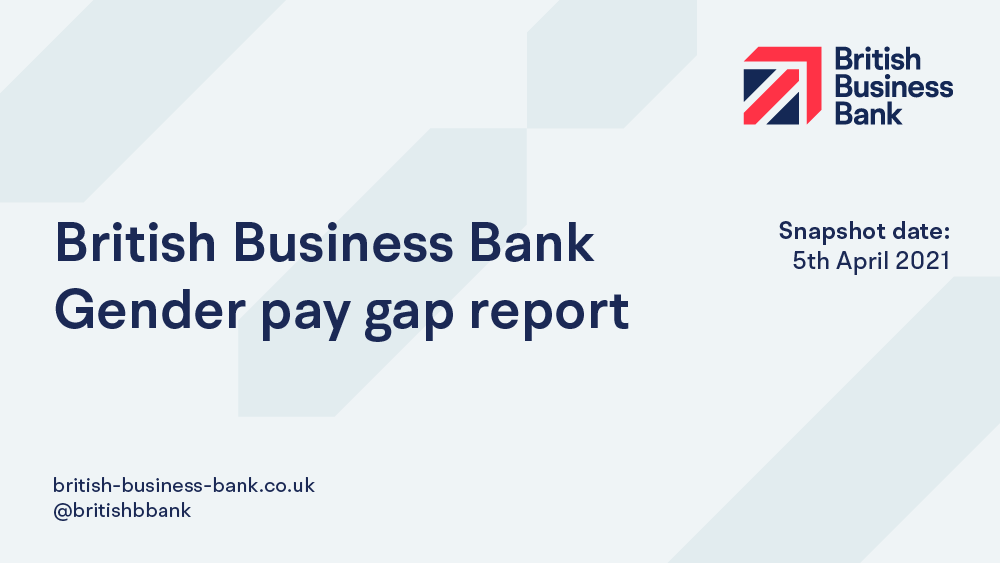What is our gender pay gap?
Employee Profile
In the UK we had 373 colleagues on the snapshot date of 5 April 2021, of whom 59% were men and 41% were women.
Pay Gap
Our analysis shows that the median gap between men and women’s earnings is 16.8%, based on hourly rates of pay at the snapshot date. This is a reduction of 1.5 percentage points from the gap we reported in 2020, the second year that the Bank was required to report its gender pay gap under the regulations. Our mean gender pay gap has also fallen to 6.8%, from 8.4% last year.

The gender pay gap is calculated as the difference between average hourly earnings of men and women as a proportion of men’s average hourly earnings. It is a measure across all jobs in the company, not of the difference in pay between men and women for doing the same job.
This means that, while relative rates of pay between men and women will clearly have a bearing on our gender pay gap, the proportion of men and women in more senior, higher-paid roles, is also a significant factor.
At the reporting date for the gender pay gap, 41% of all colleagues at the Bank were women. The percentage falls when we look only at the more senior grades within the Bank, for example when the Bank reported progress against its Women in Finance targets in July 2021, women represented 37% of all colleagues in senior management grades (Bands 2-4).
This imbalance between men and women in more senior roles, while typical of a great many employers in the UK, remains a key area of focus for the Bank. Later in this report, we explain some of the initiatives we are undertaking with the aim of increasing the proportion of women in senior roles.
The current imbalance however does help to explain the Bank’s gender pay gap. When we consider the pay gap separately for each employee grade (‘Band’) within the Bank, the gap is much lower, and in one Band there is a negative pay gap (in other words median hourly pay for women is higher than for men).
What this tells us is that the Bank’s pay gap is not an equal pay issue - men and women are paid equally for doing equivalent jobs across the firm. However, we know we cannot afford to be complacent about this. We continue to make sure that our policies and practices are fair. This includes actively reviewing individual decisions around our annual salary, promotion and recruitment processes.
Bonus Gap
The median gap between men and women’s bonus payments is 15.2%, which is a significant reduction compared to the previous year. The reduction is due to two contributing factors. First, the percentage of female colleagues working the full performance year and as a result receiving their full bonus for the year has increased. Second, the number of female colleagues receiving a bonus at senior levels has also increased. Both of these factors have resulted in a higher median
bonus being paid to female colleagues.

The 2021 bonus gap reflects bonus payments made in June and August 2020, in respect of the financial year ending 31 March 2020. The percentage of colleagues receiving a bonus or long-term incentive award in the year dropped both for female colleagues (from 74% to 60%) and for male colleagues (70% to 68%). This reflects the Bank’s rapid growth during 2020, as it expanded to deliver its new responsibilities, including running the Coronavirus business loan schemes.
Most of the additional colleagues hired by the Bank during this time were not eligible for the bonus being reported on this year. This is particularly true for female colleagues, where the eligible population grew by 67% during the year (compared to 47% for males). We believe this is further evidence of the Bank moving towards a more representative balance of men and women at all levels of the Bank.
All colleagues who have worked for the Bank for more than three months of the year participate in either an annual bonus plan or (at senior level) a long-term incentive plan. There are several factors that can influence the level of an individual colleague’s bonus or long-term incentive award.
Both plans incorporate an element that reflects the Bank’s performance as a whole against its strategic objectives, and an element that reflects individual colleagues’ performance ratings for the bonus year.
Each year we monitor the award of performance ratings carefully to ensure that the distribution of ratings is the same for women as it is for men.
Potential bonus or long-term incentive levels increase for more senior colleagues as a percentage of salary. While this incentive structure is typical of many employers, it does have a bearing on our bonus gap, as there is a greater proportion of male than female colleagues at the Bank in senior grades as has been previously noted.
The bonus gap is further impacted by part-time working. Regulations require that bonus calculations include actual bonuses received by part-time colleagues rather than full-time equivalent amounts, which means that, for the gender pay gap calculations, average bonus levels for part-time colleagues are generally lower than they are for full-time colleagues. Just under 6% of roles at the Bank are part-time and 62% of these are undertaken by women, so the methodology for calculating part-time bonuses has a higher impact on average bonuses for women than it does for men.
Other factors that influence bonus levels at the Bank are individual colleagues’ length of service during the year, and the fact that, for senior colleagues, incentive payments may be deferred for up to two years.
Once a colleague’s performance rating for the year has been determined, there is little or no discretion for managers to adjust formulaic bonus or incentive plan outcomes. On this basis, we are confident that our bonus gap is due to structural factors such as the proportion of men and women in senior roles, rather than to any gender-related bias. We remain committed to ensuring that all pay and bonus decisions are free of any form of bias through a combination of line manager training, clear guidance, and robust governance
Definitions
The median gender pay gap is the difference between the hourly pay of the median full-pay relevant man and the hourly pay of the median full-pay relevant woman. The median for each is the man or woman who is in the middle of a list of hourly pay ordered from highest to lowest paid.
The mean (or average) gender pay gap is the difference between the mean (average) hourly pay of men, and the mean (average) hourly pay of women.
Hourly pay is the total of salary and any cash allowances paid, before any deductions for tax or salary sacrifice, calculated as an hourly rate. The figure used for the 2022 gender pay gap is the hourly pay for April 2022. Employees who did not receive their normal full pay during that month for any reason are excluded from the calculation.
Bonus for the purpose of calculating the bonus gap is the total bonus and/or long-term incentive paid during the previous 12 months to all employees who were employed on the snapshot date (5 April 2022). For the Bank, this means bonus payments made in June and August 2021 in respect of the financial year ending 31 March 2021, and long-term incentive payments made in August 2021 in respect of the three-year performance cycle that ended in March 2021
